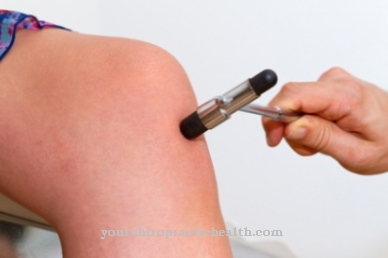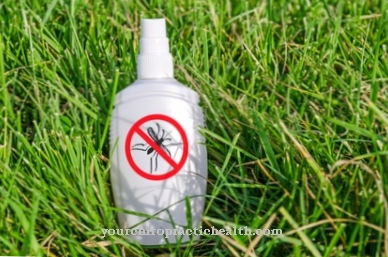In one sterilizer objects are sterilized. In the medical field, surgical instruments in particular are sterilized in order to reduce the risk of infection. Physical sterilization takes place either using heat, radiation or steam.
What is a sterilizer?

Medical sterilizers are used for sterility, i.e. for disinfection. A sterilizer frees treated areas from DNA fragments, viruses and microorganisms of all stages including their spores.
Sterilizers are usually physical sterilizers. Chemical sterilization works with toxic gases and places high demands on safety precautions. Therefore, they are rarely used.
In the medical field, sterilization usually takes place in physically sterilizing autoclaves that are operated with steam. The microorganisms can be killed by heating instead of pressure. In addition to the medical sector, sectors such as biotechnology or the food industry also depend on sterilizers. While surgical instruments and other instruments are mainly sterilized in the medical field, in biotechnology it is for example glass devices.
The world's first steam sterilizer was invented by M. Lautenschläger at the end of the 19th century. This invention was a big step in medical sterility. Until the 19th century there was little sterile work in medicine. The invention of the sterilizer thus reduced the risk of infection, sepsis and death as a result of medical treatments.
Shapes, types & types
Medical sterilizers are usually steam sterilizers. These are gas-tight, lockable pressure vessels in which various materials can be subjected to thermal treatments in the overpressure range.
Most often, sterilization is initiated using a vacuum process. The container is pumped empty several times and steam flows in. In the gravitational process, on the other hand, the air in the steam sterilizer is displaced by saturated steam. Medical steam sterilization takes place at temperatures of 121 degrees Celsius and an overpressure of one bar. The materials to be sterilized are exposed to these conditions for at least 20 minutes.
A distinction must be made between the steam sterilizers and the easier-to-use hot air sterilizers. They work with dry heat at temperatures of up to 250 degrees Celsius. The sterilization time in these devices is at least 30 minutes. Radiation sterilizers are also used today and work with UV rays, electron bombardment or beta and gamma rays.
Structure & functionality
Steam sterilizers are constructed similar to Papin's pot. This tightly sealable vessel paved the way for the modern pressure cooker in the 17th century. In the airtight autoclave, the air is completely replaced by water vapor and organic cells are destroyed at high pressure. This state is usually achieved by alternating periods between pumping out and inflowing. That is, air is pumped out bit by bit and steam is let in bit by bit.
Inside the devices, at an overpressure of several bar, heat of at least 120 degrees Celsius is emitted and an atmosphere that is absolutely saturated with water vapor is present. The time it takes to create a vacuum is also known as the heating-up time. This process is followed by the equilibrium time, which is used to produce the required temperatures inside the items to be sterilized. This period is followed by an exposure time during which the germs are killed off. During the cooling time, the sterile items cool down and are ventilated. Steam sterilization therefore works by heating in the moist state.
In hot air sterilizers, on the other hand, the sterilization takes place via moving and dry hot air which washes around the object to be sterilized and thus flames it. Hot air sterilization works at such high temperatures that it is absolutely unsuitable for paper and textiles. In radiation sterilization, ionizing rays destroy the nucleic acids of microbial cells. All sterilizers rely on a gas-tight sealed form.
Medical & health benefits
Since I. Semmelweis, medicine has suspected that strict hygiene measures are likely to reduce deaths from surgical interventions and other medical treatments. Until then, doctors had considered hygiene to be less relevant and, for example, operated in black coats that did not have to be washed after each operation. Cleaning the instruments and the operating field was also not very common at the time.
J. Lister achieved a breakthrough in this regard. He used carbolic as a cleaning agent for hands, medical instruments and the operating field. This enabled him to create a low-germ atmosphere and thus reduce the risk of infection.
As soon as the microscope was used, medicine recognized the existence of pathogenic germs. Asepsis established itself as a requirement for medical procedures and instruments. The simple cleaning of instruments became disinfection and finally sterilization. Inventions like sterile rubber surgical gloves were born.
The requirements of sterilization differ from disinfection. The goal of sterilization is 100 percent sterility. Although this complete sterility cannot be guaranteed either in practices or in hospitals, the residual content of reproductive microorganisms after sterilization is a whole order of magnitude smaller than after simple disinfection.
The medical and health benefits of sterilizers are correspondingly high. Medical sterilizers are now a basic purchase for medical institutions in the western world, since a lack of sterility of surgical instruments and other instruments would, according to asepsis, be a negligent and irresponsible way of dealing with patient life.

























.jpg)


